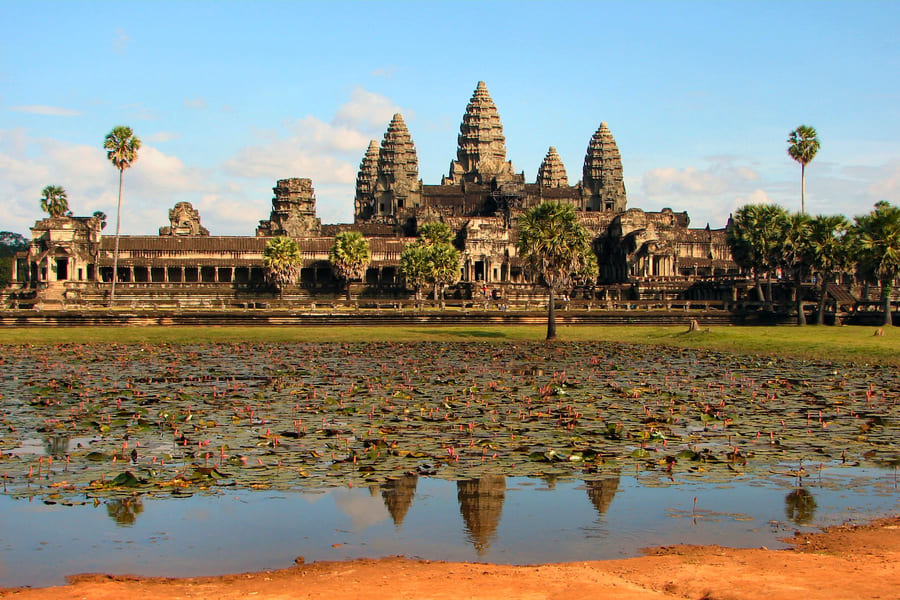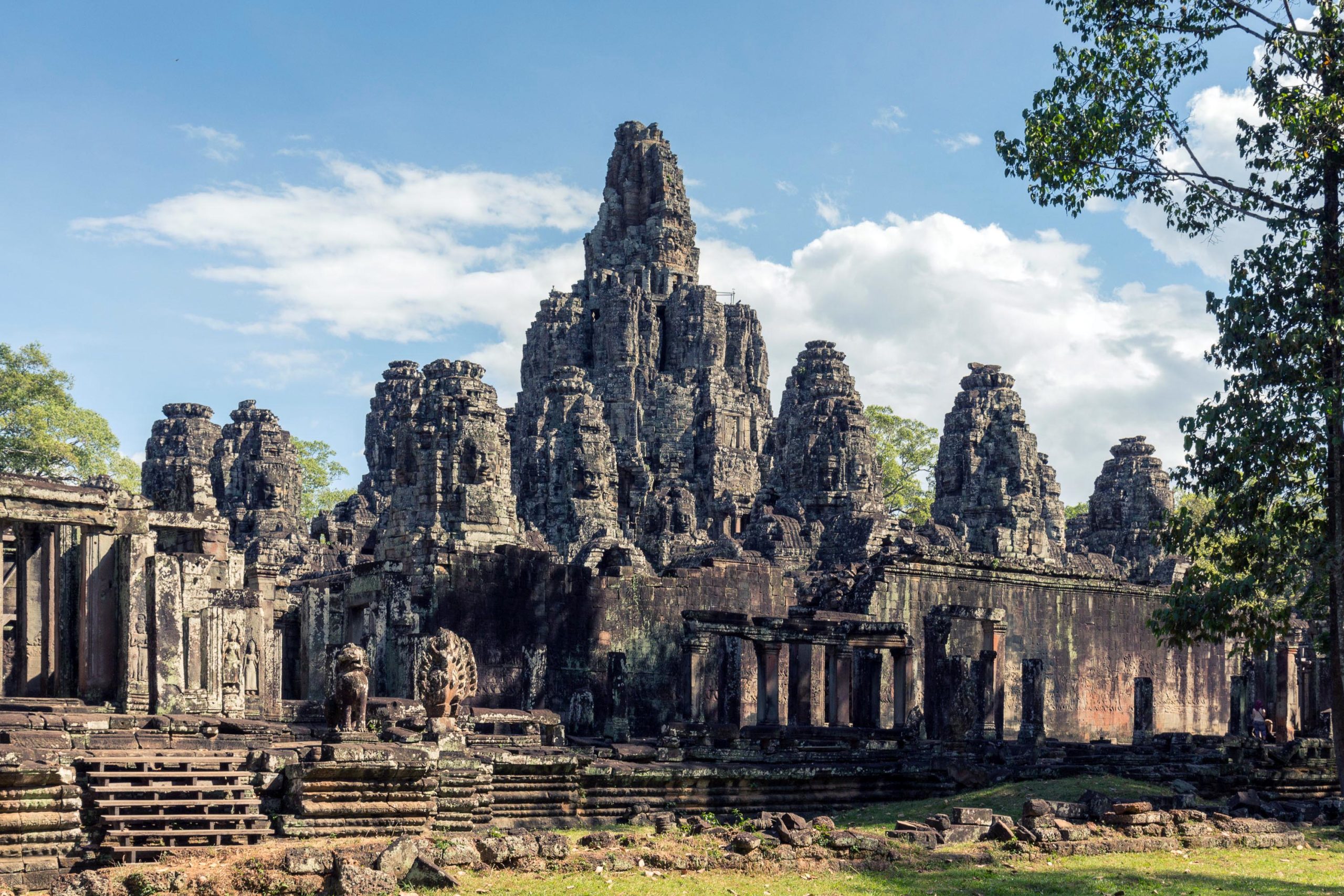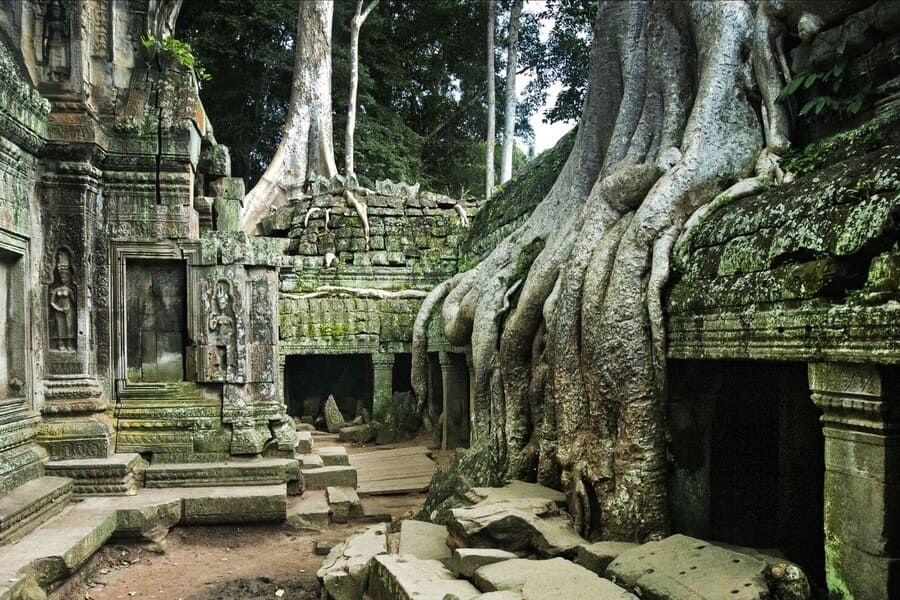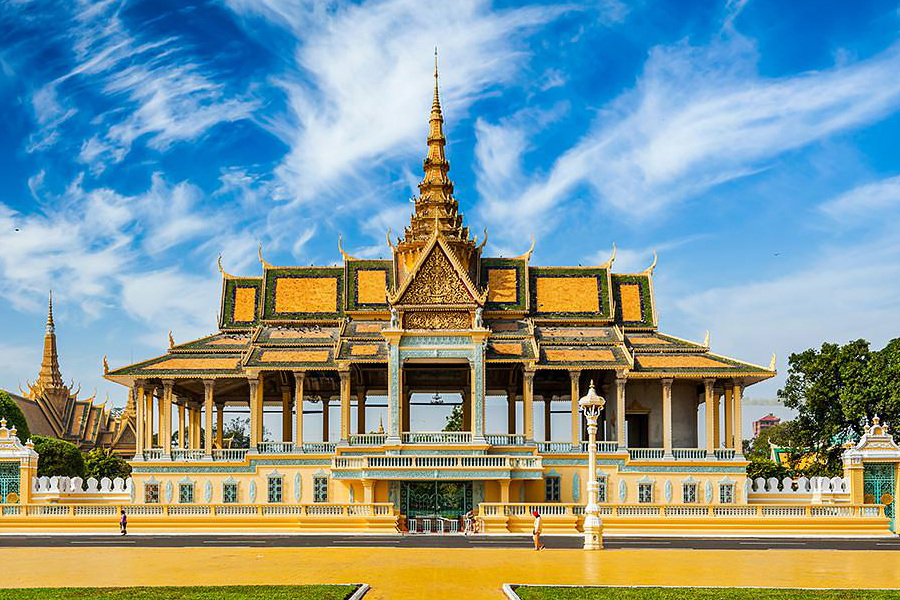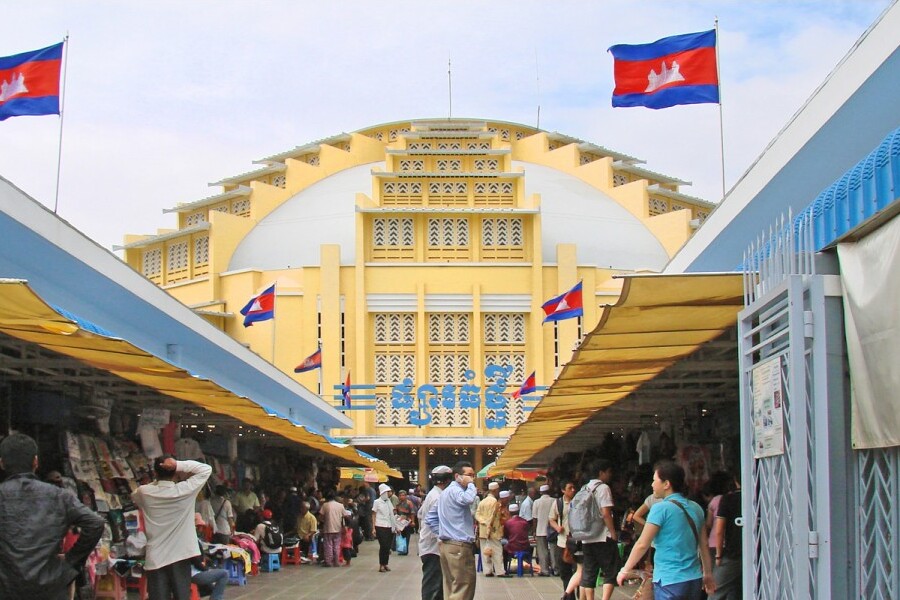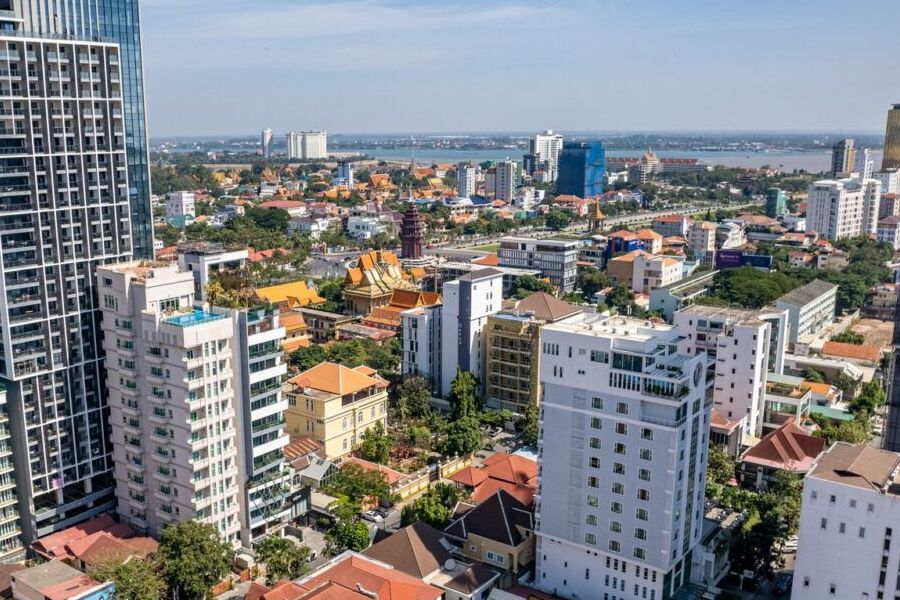Embarking on cambodia tours unveils a captivating journey through time, where the architecture narrates a rich tapestry of history, culture, and innovation. From the awe-inspiring temples of Angkor to the modern-day architectural marvels, the architecure of Cambodia reflects the country's enduring legacy and its evolution through centuries of civilization. Each structure tells a story, bearing witness to the triumphs and tribulations of a nation steeped in tradition yet embracing modernity.
Contents
The Architecture of Cambodia in Angkor Period
The Angkor period stands as a testament to the zenith of Khmer architectural achievements, spanning from the 9th to the 15th centuries. During this time, the Khmer Empire flourished, establishing vast urban centers and constructing monumental temple complexes that remain awe-inspiring marvels to this day.
Angkor's architectural legacy is characterized by several distinctive elements found in its temples, notably exemplified in Angkor Wat and Bayon:
- Temple Mountain Design: The most iconic feature of Angkor architecture is the temple mountain design, symbolizing Mount Meru, the mythical home of the Hindu gods. This design is evident in Angkor Wat's towering central sanctuary and surrounding galleries, as well as in other temples like Bakong and Pre Rup.
- Intricate Bas-Reliefs: The walls of Angkorian temples are adorned with extensive bas-reliefs depicting Hindu epics such as the Ramayana and Mahabharata, as well as scenes of everyday life, royal processions, and cosmic battles. These intricate carvings offer a visual narrative of Khmer history and mythology.
- Symbolic Motifs: Angkorian architecture incorporates a wealth of symbolic motifs, including lotus flowers, naga serpents, and apsara dancers. These motifs are not merely decorative but carry profound religious and cultural significance, reflecting Hindu and Buddhist cosmology and beliefs.
Spiritual Significance
The spiritual and cultural significance of Angkorian architecture is profound, reflecting the syncretism of Hinduism and Buddhism in Khmer society:
- Hindu Influences: Many of the temples built during the Angkor period were dedicated to Hindu gods, with Angkor Wat being dedicated to the god Vishnu. The temple mountain design symbolized the cosmic axis linking the earthly realm with the celestial realm, reflecting Hindu cosmology.
- Buddhist Adaptations: Over time, Buddhism gained prominence in Khmer society, leading to the incorporation of Buddhist elements into temple architecture. Bayon, with its iconic smiling faces believed to represent the bodhisattva Avalokiteshvara, exemplifies this fusion of Hindu and Buddhist symbolism.
- Cosmic Symbolism: Angkorian temples were designed as microcosms of the universe, with their layout and orientation reflecting the cosmological principles of Hindu and Buddhist belief systems. The architectural symbolism served to connect worshippers with the divine and evoke a sense of spiritual transcendence.
The Architecture of Cambodia in Post-Angkor Period
The decline of the Angkor civilization marked a pivotal moment in Cambodian history, leading to significant changes in architectural styles and regional influences:
- Environmental Factors: Scholars speculate that environmental factors, such as deforestation, soil depletion, and changes in water management, contributed to the decline of Angkor. These environmental pressures likely led to agricultural decline and societal unrest.
- Political Instability: The Angkor Empire faced internal conflicts and external threats from neighboring kingdoms, including the Thai and Vietnamese, which weakened its political power and stability.
- Economic Decline: With the decline of agricultural productivity and trade routes, the economy of Angkor suffered, leading to a loss of wealth and influence.
As the Angkor Empire waned, Cambodia entered a period of transition characterized by regional architectural styles influenced by neighboring kingdoms:
- Thai Influence: With the rise of the Ayutthaya Kingdom in Thailand, Cambodian architecture began to exhibit Thai influences, such as the use of prang-style towers and tiered roofs. This can be seen in temples like Wat Phu in southern Laos, which features Khmer and Thai architectural elements.
- Lao Influence: The influence of the Lan Xang Kingdom in Laos also shaped Cambodian architecture, particularly in the incorporation of wooden structures and intricate carvings. Examples include the wooden vihara (monastery) at Wat Nokor in Kampong Cham province.
- Vietnamese Influence: During the Nguyen Dynasty in Vietnam, Cambodian architecture adopted elements of Vietnamese design, such as curved rooflines and ceramic ornamentation. This influence is evident in buildings like the Royal Palace in Phnom Penh, which features a blend of Khmer and Vietnamese architectural styles.
The Architecture of Cambodia in Colonial and Modern Times
Colonial Era
French colonial rule left an indelible mark on Cambodian architecture, with notable examples including:
- Royal Palace: Constructed in the 1860s under the direction of French architects and planners, the Royal Palace in Phnom Penh blends traditional Khmer design elements with French colonial architectural features. The palace's grandeur and symmetry reflect French neoclassical influences, while its golden spires and intricate carvings pay homage to Khmer architectural traditions.
- Colonial-Era Villas: In Phnom Penh and other urban centers, French colonial administrators and affluent residents built elegant villas characterized by airy verandas, shuttered windows, and steeply pitched roofs. These villas, often surrounded by lush gardens, served as symbols of French colonial prestige and prosperity.
Art Deco and Modernist Architecture
During the early to mid-20th century, Cambodia experienced a surge of Art Deco and modernist architecture, blending European design aesthetics with Khmer motifs:
- Central Market (Phsar Thmei): Designed by French architect Louis Chauchon in the 1930s, Phnom Penh's Central Market is a prime example of Art Deco architecture. Its distinctive dome-shaped structure, adorned with geometric patterns and ornate metalwork, reflects the opulence and optimism of the era.
- Chaktomuk Conference Hall: Built in the 1960s, this modernist landmark in Phnom Penh features clean lines, geometric shapes, and minimalist aesthetics. The building's open layout and expansive windows embrace natural light and ventilation, while its sculptural form pays homage to Khmer architectural traditions.
Contemporary Architecture
Reconstruction and Revival
Efforts to reconstruct and preserve ancient Khmer sites have been integral to Cambodia's contemporary architectural landscape:
- Restoration of Banteay Chhmar: Banteay Chhmar, a lesser-known temple complex dating back to the 12th century, has undergone extensive restoration efforts in recent years. Collaborative projects involving local communities, government agencies, and international organizations have focused on stabilizing structures, conserving intricate carvings, and enhancing visitor amenities. The restoration of Banteay Chhmar not only preserves Cambodia's cultural heritage but also fosters sustainable tourism and economic development in rural areas.
- Contemporary Interpretations of Khmer Architecture: Architects and designers have drawn inspiration from Khmer architectural traditions to create contemporary interpretations in new construction projects. These projects often blend modern materials and construction techniques with traditional design elements, paying homage to Cambodia's rich cultural heritage while meeting the needs of contemporary living.
Urban Development
Cambodia's rapidly growing cities face both challenges and opportunities in urban development:
- Rise of Modern High-rise Buildings: Phnom Penh, in particular, has witnessed a proliferation of modern high-rise buildings, transforming the city's skyline. These skyscrapers, often housing luxury condominiums, hotels, and office spaces, symbolize Cambodia's economic growth and urbanization. However, concerns have been raised about the impact of high-rise development on urban aesthetics, infrastructure, and social inequality.
- Infrastructure Projects: Infrastructure projects, such as road expansions, bridges, and public transportation systems, aim to address the demands of urbanization and improve connectivity. The construction of modern infrastructure presents opportunities for sustainable urban planning and development, including the integration of green spaces, pedestrian-friendly amenities, and efficient public transport systems.
In conclusion, the architecture of modern Cambodia is a reflection of the country's complex history, vibrant culture, and evolving aspirations. As Cambodia continues to develop and grow, its built environment will play a crucial role in shaping the country's future, balancing the need for progress with the imperative of preserving its architectural heritage and natural beauty.

